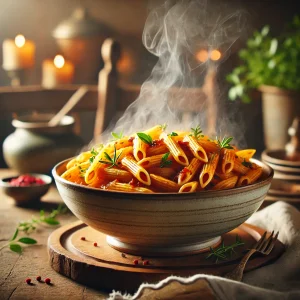
The Ultimate Guide to Perfect Pasta: From Sauce to Shape
Pasta. It’s a staple in kitchens around the world, a comforting dish that can be both simple and sophisticated. But achieving perfect pasta – that’s an art. This guide will take you on a culinary journey, exploring everything from choosing the right shape to mastering the art of the perfect sauce. Get ready to elevate your pasta game!
Choosing the Right Shape: More Than Just Looks
Did you know that different pasta shapes are designed to hold different sauces? It’s true! The shape of your pasta can significantly impact the overall taste and texture of your dish.
- Long, thin pasta (like spaghetti or linguine): Best suited for light, oil-based sauces or sauces with small, evenly distributed ingredients.
- Short, tubular pasta (like penne or rigatoni): Ideal for chunkier sauces, as the ridges and tubes trap the sauce, delivering a burst of flavor with every bite.
- Shell-shaped pasta (like conchiglie): Perfect for creamy sauces, as the shells cradle the sauce beautifully.
- Filled pasta (like ravioli or tortellini): These are best served with simple sauces that won’t overpower the delicate filling.
Cooking Pasta Al Dente: The Key to Perfection
“Al dente” – meaning “to the tooth” – is the holy grail of pasta cooking. It refers to pasta that is cooked but still firm to the bite. Here’s how to achieve it:
- Use plenty of water: Pasta needs room to swim! Use at least 4 quarts of water per pound of pasta.
- Salt the water generously: This seasons the pasta from the inside out. Think “sea water” salty.
- Bring the water to a rolling boil: Don’t add the pasta until the water is boiling vigorously.
- Cook according to package directions: But start checking for doneness a minute or two before the recommended time.
- Test for al dente: The pasta should be firm but not hard in the center. Bite into a piece – it should offer slight resistance.
- Reserve some pasta water: This starchy water is a secret weapon for creating silky, emulsified sauces.
- Drain the pasta: But don’t rinse it! Rinsing washes away the starch that helps the sauce adhere to the pasta.
Sauces That Sing: From Simple to Spectacular
The sauce is the soul of any pasta dish. Here are a few ideas to inspire you:
- Classic Tomato Sauce: A simple yet flavorful sauce made with tomatoes, garlic, onions, and herbs.
- Creamy Alfredo Sauce: A rich and decadent sauce made with butter, cream, and Parmesan cheese.
- Pesto Sauce: A vibrant and herbaceous sauce made with basil, pine nuts, garlic, Parmesan cheese, and olive oil.
- Meat Sauce (Bolognese): A hearty and flavorful sauce made with ground meat, tomatoes, and vegetables.
- Vegetable Sauce: A light and healthy sauce made with a variety of seasonal vegetables.
(Include links to your favorite pasta sauce recipes here.)
Bringing it All Together: The Perfect Pasta Dish
Once your pasta is cooked al dente and your sauce is ready, it’s time to combine them. Add the pasta to the sauce pan (not the other way around!) and toss to coat. If the sauce is too thick, add a little of the reserved pasta water to loosen it up.
Beyond the Basics: Tips and Tricks
- Use high-quality ingredients: The better the ingredients, the better the dish.
- Don’t overcook the pasta: Al dente is key!
- Season generously: Don’t be afraid to add salt, pepper, and other herbs and spices to your sauce.
- Garnish with fresh herbs: A sprinkle of fresh parsley, basil, or oregano can elevate your dish to another level.
Embrace the Pasta Passion
Pasta is a versatile and delicious dish that can be enjoyed in countless ways. Don’t be afraid to experiment with different shapes, sauces, and ingredients. With a little practice, you’ll be creating restaurant-quality pasta dishes in your own kitchen.
Share your favorite pasta recipes and cooking tips in the comments below!
Meta Description: Unlock the secrets to perfect pasta! This guide covers everything from choosing the right shape and cooking it al dente, to creating delicious sauces. Elevate your pasta game with these tips and tricks!
Tags: pasta, pasta recipes, cooking pasta, pasta sauce, Italian food, Italian cuisine, al dente, pasta shapes, cooking tips, food blog, recipe blog,


